THE MIDLAND RAILWAY STUDY CENTRE
January 2021 update
The New Year brought more restrictions and a return to a lockdown, but as the rules allow the construction industry to continue as well as volunteering for a charitable organisation where not possible from home, work of preparing for the reopening of the Silk Mill and the Midland Railway Study Centre is able to continue. Both Derby Museums and the main contractor for the project, Speller Metcalfe, are extremely proactive in making their workplace Covid safe. Working in a mask is often uncomfortable, but is just one more thing about the current situation to be endured for our collective wellbeing.
Having reached mid-January the Study Centre has started to look the part once more. Even as the fantastic people from B.E.Webbe's Removals bring more and more of the collections back into the Silk Mill from remote storage, the floor in the Learning Space just outside the Study Centre which is being pressed into use as a staging area, is slowly returning to view. We have reached a point where all the boxed material has been placed into its new shelving, as have most of the framed & glazed items. The focus now turns to populating the wonderful new plan chests constructed for us in the Museum's workshop as well as housing the various sub-collections such as those of Stephen Summerson, Pat Larkam, Austin Brackenbury and many more. Much of this material is, by its very nature, "miscellaneous" in shape and format, and as such will be housed in lockable shelving — again created especially for this purpose by the staff and volunteers in the workshop.
Another in a continuing series of milestones has been the installation of the work surfaces in the reading room. This area is an entirely new space created as a mezzanine floor in the eaves of what was the main store room of the old Study Centre (now the only store room of the new incarnation as all our three dimensional items will be located within the accessible storage, elsewhere in the main Museum of Making). A consequence of its position in the building is that the floor level is necessarily somewhat lower than the adjacent Railways Revealed area (which houses the model railway and a series of displays relating to railways and their specific relevance to Derby). In order that our reading room is available to all, regardless of mobility, a moveable ramp can assist in negotiating the steps. The workspace has been designed to allow up to three researchers to work at any one time with plenty of desk space to spread out larger documents and plans.
Here are some photos to give you a feel for how things are progressing ...
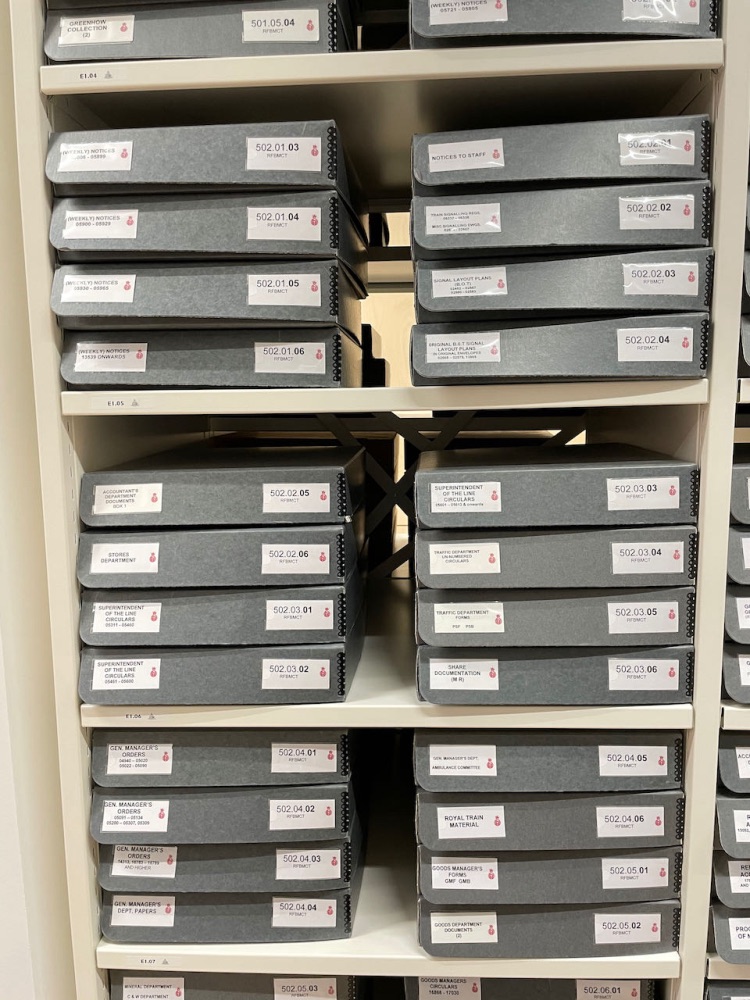
One of the major tasks we face in moving into the new Study Centre is that our existing shelf numbering scheme has to be completely updated. Key to being able to find a given document or item is knowing its allocated location. As the new store room is laid-out in such a way as to create distinct aisles, a prefix letter is used to denote the aisle, followed by a number representing each fixture within that aisle, then the shelf number working down from the top and finally the individual box folder or file on that shelf. As such we see that the PEL file containing Superintendent of the Line Circulars which formerly occupied 502.03.05, will henceforth by known as E1.06.05. New label inserts for that purpose have been procured and will be printed once we are happy that no further tinkering to make everything fit is required!

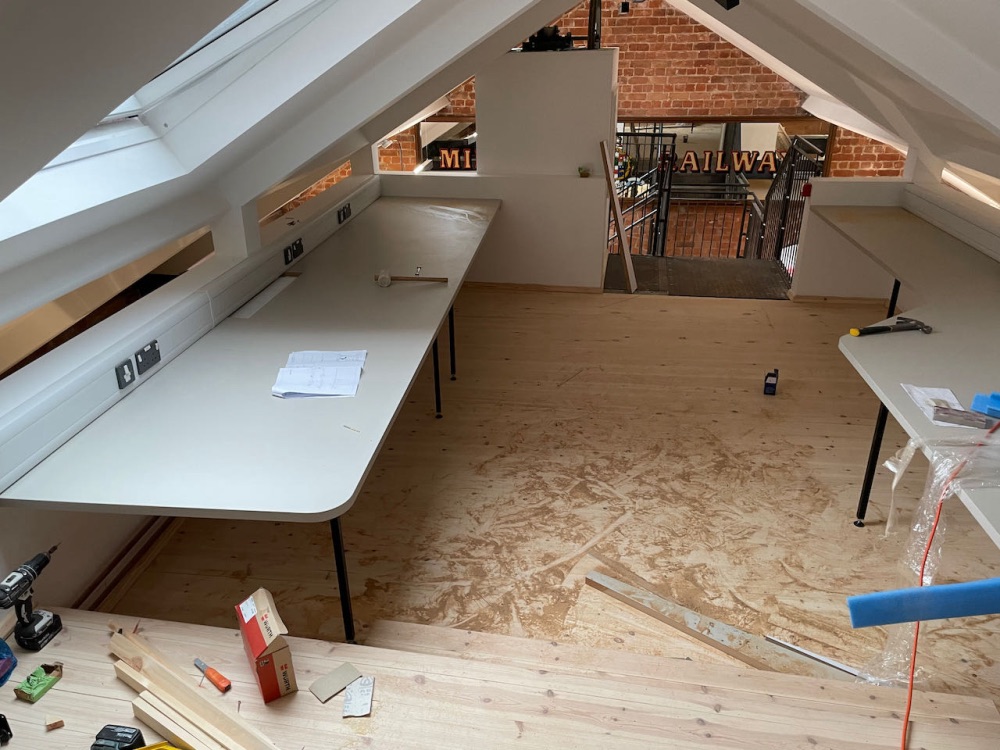
As will be immediately apparent, these two images capture the installation of the worksurfaces as a "work-in-progress". I am confident the sawdust and other detritus will have been dealt with by the installers before the day concluded. Meanwhile, I hope these views adequately convey both the amount of surface area available for plans and other large documents to be spread-out, as well as the surprising amount of circulation space in the room — given its attic-like nature.
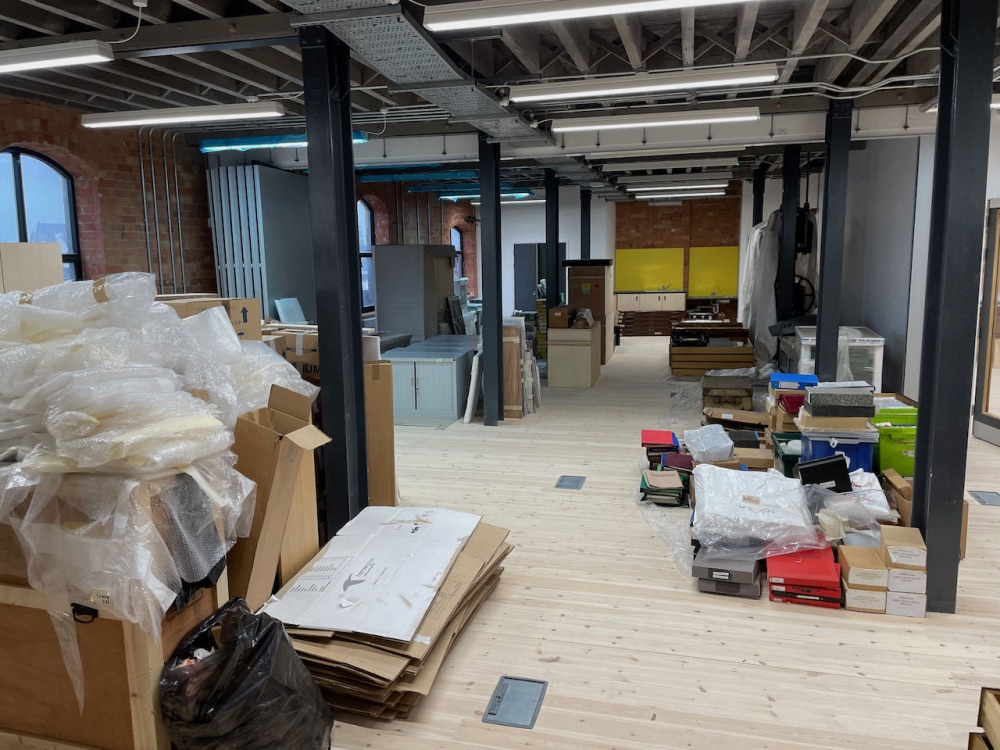
I have included this view of the Learning Space to illustrate that as quickly as we work to move our material into the adjacent Study Centre, so grows the “mountain” of cardboard and bubble wrap. All this cast-off material will, of course, be recycled — as, indeed, will the cabinets which previously housed the collection and which are now redundant.
As with previous updates, let's have a look at what's going on elsewhere in the Silk Mill...
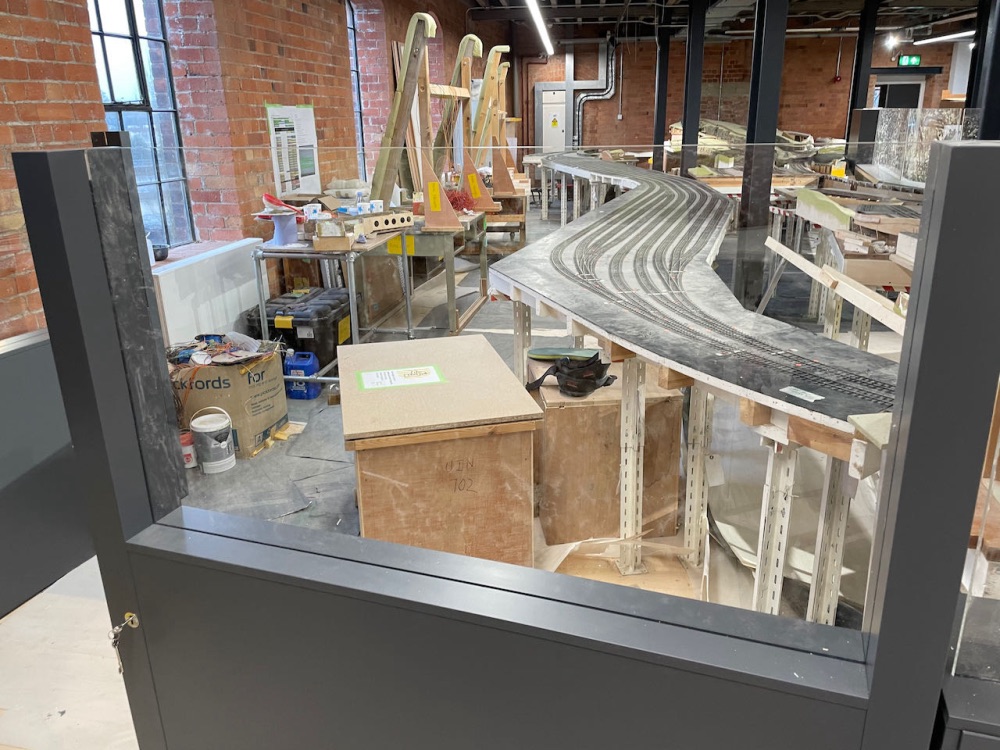

Although not something that we in the Midland Railway Study Centre are directly involved in, it is probable that anyone with an interest in the Midland Railway will wish to know how things are progressing with the reconstruction of Derby Museum's justly famous "Kirtley" model railway. It's fair to say that things are coming together and there is no doubt it will be hugely impressive. Unlike in its previous incarnation where it was entirely enclosed, here there will only be a low perspex barrier between the viewer and the model. At the far end visitors will be able to peek behind the scenic backdrop and watch the activity in the fiddle yard and the operators.
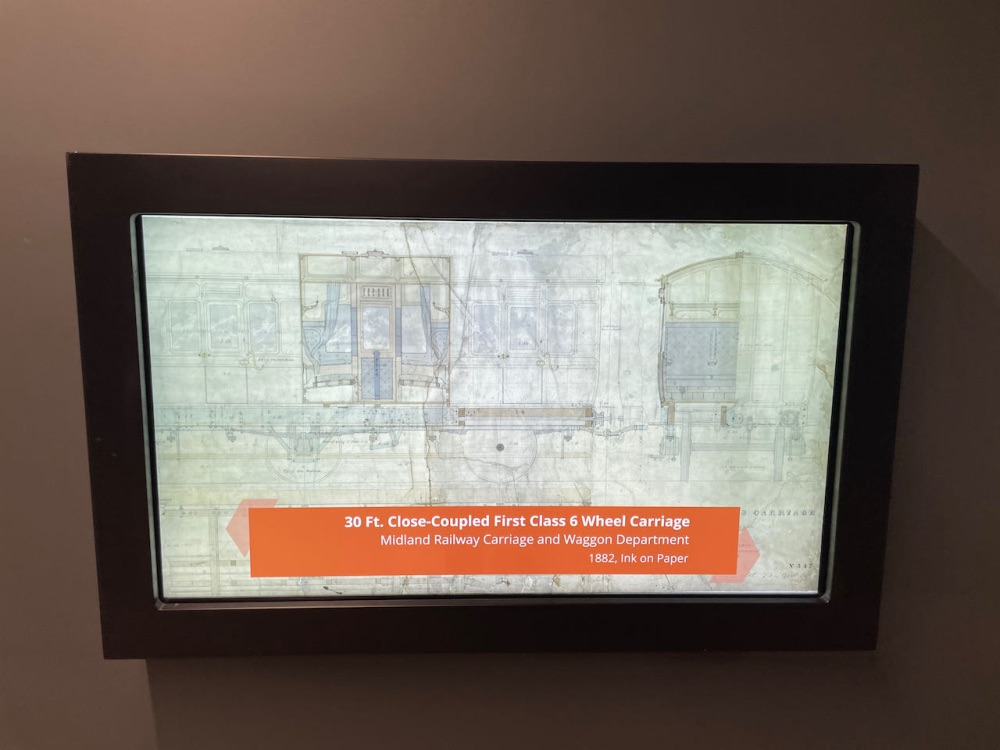
One of the most fundamental principles of the Museum of Making is to have the entirety of its collections accessible to visitors. In the case of documents, especially large drawings or plans, making them physically available in that way is clearly not a practical proposition. To counter this, interactive digital displays will be available to visitors to call-up a selection of documents across the breadth of the Museum's collection. Here is an example of one of the vast number of Carriage & Wagon drawings. I should say that the caption may be subject to revision in due course!
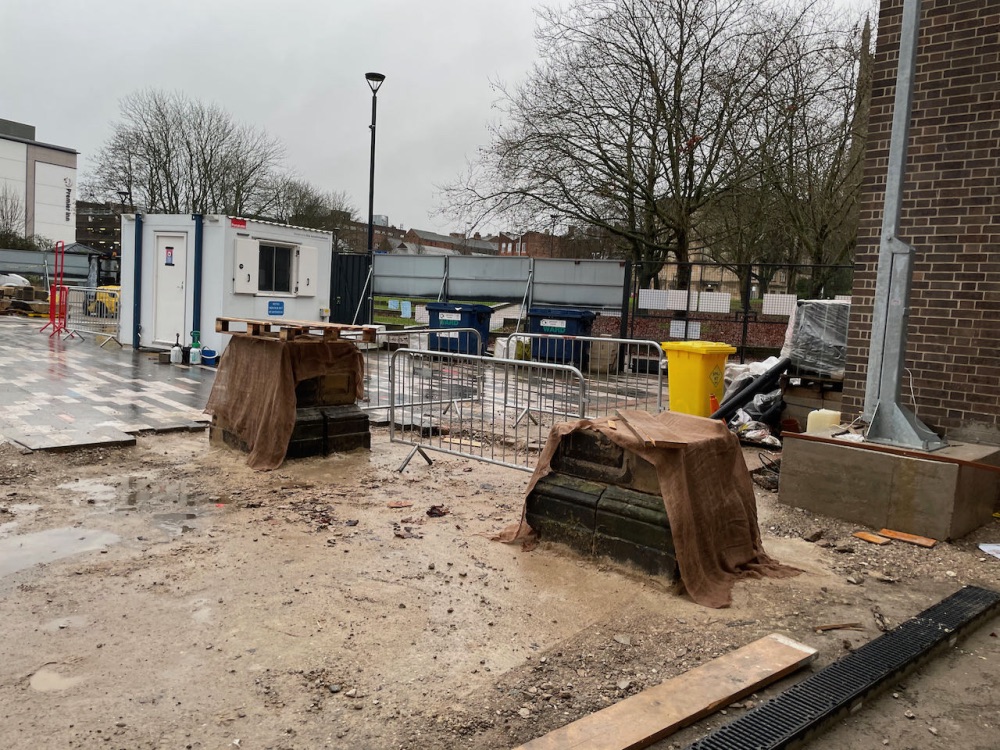
Outside the Silk Mill still looks like a building site — which of course it is! However, work to restore the area is beginning. In this view we see the pillars which will support the fabulously ornate cast iron Bakewell Gates being rebuilt. In the building's previous incarnation as the Industrial Museum, these gates were located to the side of the former front entrance (the space now occupied by the new Civic Hall). They are now being re-erected in the position they occupied when the Silk Mill was in use for its originally intended purpose. I don't know when they were removed from this spot, but I imagine it was likely with the ascendance of the motor lorry a century or so ago. This is just a hint of the rejuvenation of the area in front of the Museum of Making and around Cathedral Green.
I hope you have enjoyed the January update on progress to reopen the Midland Railway Study Centre. The Museum of Making continues to come to life before our very eyes and is on-track for a reopening some time this Spring.
You can read the previous updates as well if you are interested; here is November's update and here is December's update